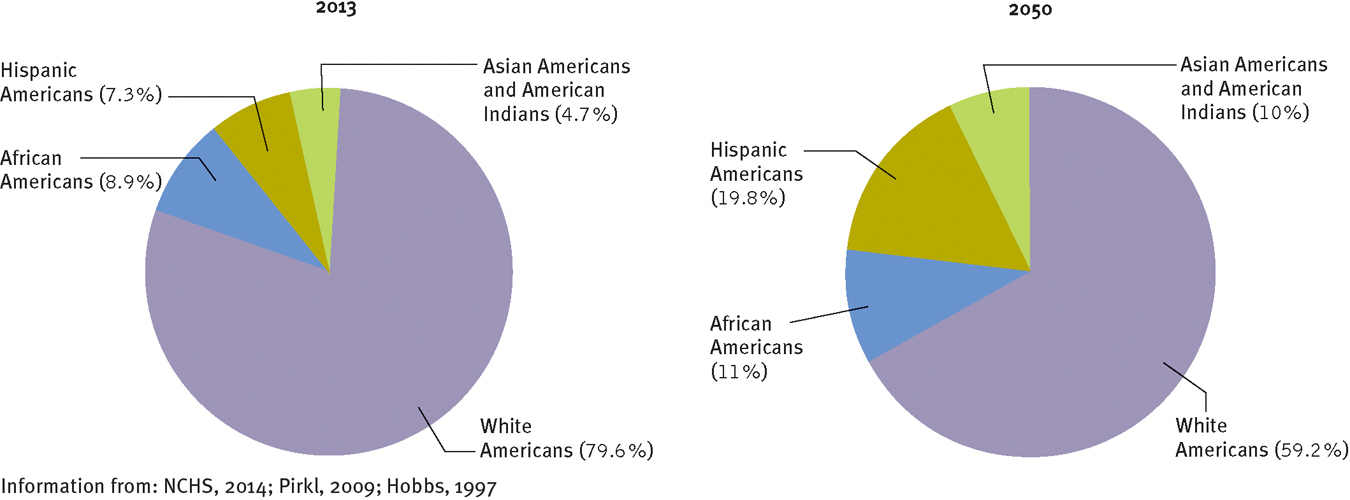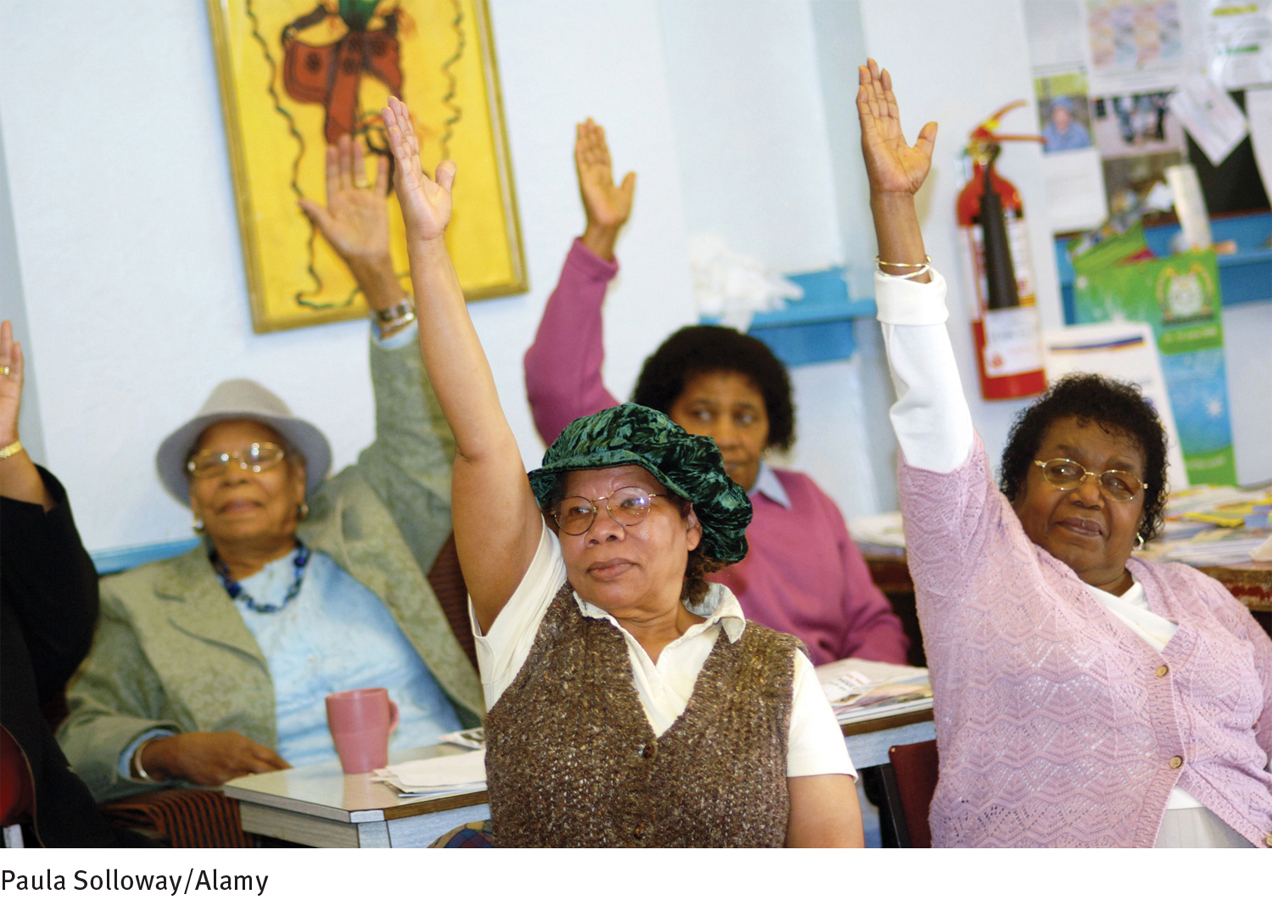18.7 Issues Affecting the Mental Health of the Elderly
BETWEEN THE LINES
Aging, Gender, and Race
|
83.8 years |
Average life expectancy for Hispanic American women today |
|
81.1 years |
Average life expectancy for white American women today |
|
77.7 years |
Average life expectancy for African American women today |
|
78.5 years |
Average life expectancy for Hispanic American men today |
|
76.4 years |
Average life expectancy for white American men today |
|
71.4 years |
Average life expectancy for African American men today |
|
(Information from: NCHS, 2014) |
|
As the study and treatment of elderly people have progressed, three issues have raised concern among clinicians: the problems faced by elderly members of racial and ethnic minority groups, the inadequacies of long-
First, discrimination based on race and ethnicity has long been a problem in the United States (see Chapter 3), and many people suffer as a result, particularly those who are old. To be both old and a member of a minority group is considered a kind of “double jeopardy” by many observers. For older women in minority groups, the difficulties are sometimes termed “triple jeopardy,” as many more older women than older men live alone, are widowed, and are poor. Clinicians must take into account their older patients’ race, ethnicity, and gender as they try to diagnose and treat their mental health problems (Kwag et al., 2011; Knight et al., 2006) (see Figure 18-4).

Ethnicity and old age
The elderly population is becoming racially and ethnically more diverse. In the United States today, almost 80 percent of all people over the age of 65 are white Americans. By 2050, white Americans will comprise only 59 percent of the elderly.
Some elderly people in minority groups face language barriers that interfere with their medical and mental health care. Others may hold cultural beliefs that prevent them from seeking services. Additionally, many members of minority groups do not trust the majority establishment or do not know about medical and mental health services that are sensitive to their culture and their particular needs (Ayalon & Huyck, 2001). As a result, it is common for elderly members of racial and ethnic minority groups to rely largely on family members or friends for remedies and health care.

Today, 10 to 20 percent of elderly people live with their children or other relatives, usually because of increasing health problems (Span, 2009; Etaugh, 2008). In the United States, this living arrangement is more common for elderly people from ethnic minority groups than for elderly white Americans. Elderly Asian Americans are most likely to live with their children, African Americans and Hispanic Americans are less likely to do so, and white Americans are least likely (Etaugh, 2008; Armstrong, 2001).
Second, many older people require long-
At any given time in the United States, only about 4 percent of the entire elderly population actually live in nursing homes (1.5 million people), but around 13 percent of people 85 years and older do eventually wind up being placed in such facilities (USDHHS, 2011; Edelstein et al., 2008). Thus many older adults live in fear of being “put away.” They fear having to move, losing independence, and living in a medical environment. Many also worry about the cost of long-
Finally, clinical scientists suggest that the current generation of young adults should take a health-
